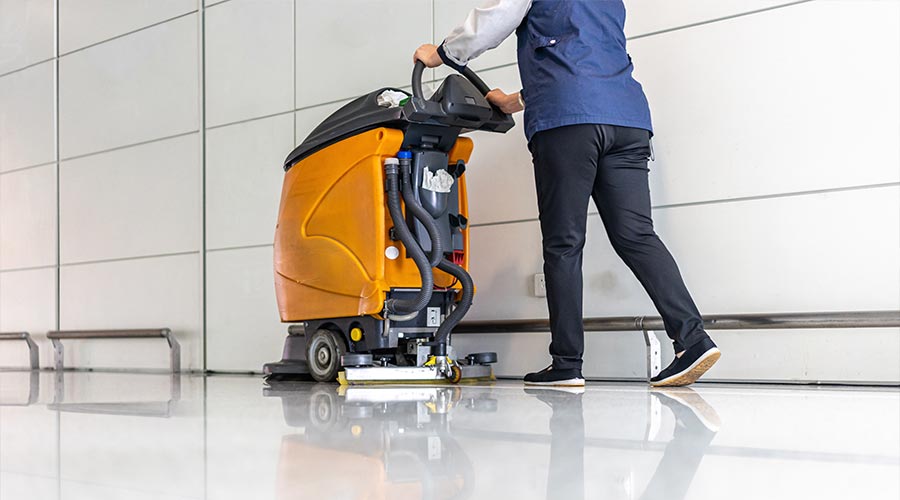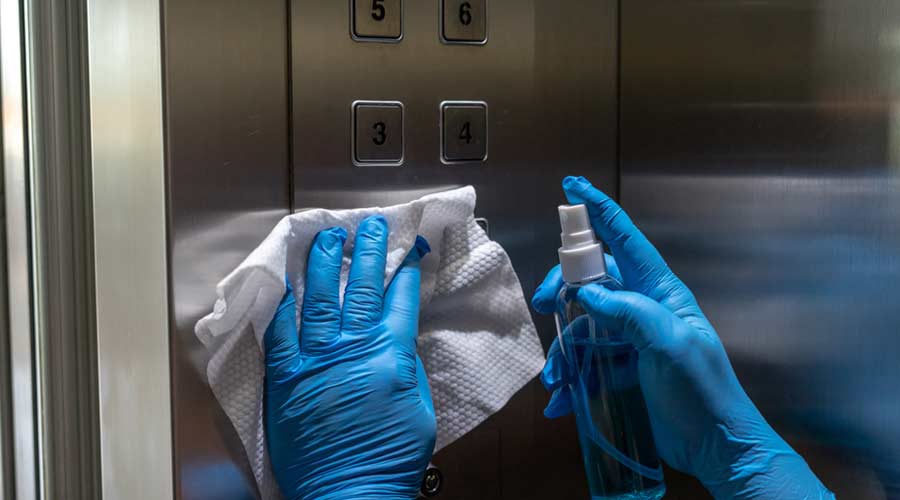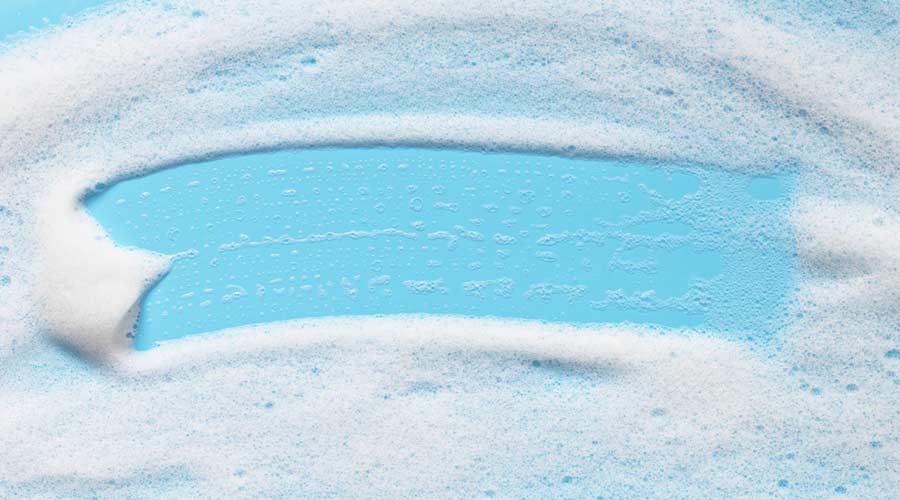
Premium, inexpensive, blue, green, floor pads will not work to their full potential if matched with the wrong equipment. Some call it a rotary floor machine, but many today simply say “buffer” or “scrubber”—no matter the name, it is a staple of the cleaning industry. Stan Hulin, president and CEO of Future Facility Technology, Gladstone, Oregon, considers the length of the handle, trigger system, weight, and size when considering these machines. He says a good weight is over 100 pounds and that when dealing in the commercial market, these machines should be 20 or 21 inches. He says size is especially important to note because when someone buys a machine that is, for example, 20 inches, it will need a 19-inch pad because of the block holder based under the shroud of the machine.
Matching the right machine for the job is not too complex, but it is important. If the project calls for buffing, scrubbing and stripping, experts suggest a machine that runs at lower speed, around 175 RPM. Those looking to polish to a high gloss will want a high-speed burnisher. Experts say these machines must run to at least 1,500 RPM, but that range might get past 2,000 RPM for desired results.
When deciding on an autoscrubber, there are even more boxes to check.
“The square footage, type of flooring, and noise level should all be considered,” says Kristian Sanchez, floor equipment specialist at Imperial Dade, Jersey City, New Jersey. “It should have sufficient down pressure; certain models have adjustable down pressure to help tackle different floor types without damaging the floor.”
Other factors can dictate how much time a job can take while using an autoscrubber. For example, an autoscrubber with a small tank will require more trips to dump dirty water and refill the tank with clean water. Good battery life permits more time doing the work, and less time waiting. That is why more decision makers are opting for lithium batteries, even if the cost is more.
Cleaning demands have perhaps never been higher, and those expectations could become even more difficult to fulfill as some businesses shift to more days in the office. This is why Franke sees a growing interest in technology that helps departments track cleaning performance. He says many modern autoscrubbers have the ability to collect data that documents the work that machine is doing. While there is often an added expense for that type of service, he believes it is worth the cost because the data gives facility cleaning managers proof of the work being done.
Franke also believes the purchase of an autonomous autoscrubber is worth the added expense in many situations because it can help teams perform at the elite level expected of their department, even when understaffed.
Getting Floor Finish Right
Like floor pads and machinery, the substances put onto floors also play a critical role in maintenance. It is not a bad idea to use a chemical management system or dilution control system to ensure the correct amount of chemical is applied, says Sanchez. Applying too much chemical to a floor leaves it feeling sticky and looking dirty, which essentially defeats the purpose of caring for a floor in the first place. For daily cleaning, he recommends frontline teams use a PH-neutral cleaner as this will not damage a floor’s finish.
While on the topic of a floor’s finish, it is vital to note both the finish used and the way it is applied is extremely important. By using a low maintenance, high-durability finish, facility cleaning managers can reduce the amount of stripping and recoating that is needed.
In situations where stripping is necessary and it is stripped down bare, make sure frontline teams build it back up the right way. Franke suggests applying two coats to act as more of a sealer, then another two or three coats that will build up the sheen and durability of the flooring.
Of course, the type of treatment being applied also depends on what flooring is in place. Vinyl composition tile is best addressed with an acrylic finish. Marble, terrazzo, and concrete can be polished naturally, though Sanchez says application of a water-based acrylic finish on these floors can help prevent slips and falls and even harden the floor. Luxury vinyl tile is a match for a “no strip” urethane-based finish. But be careful, as polyurethanes and urethanes require an intricate application process.
It is important teams pay attention to the details because when the application is not done correctly, the floor can end up looking ugly. Hulin recalls a facility that had previously placed 30,000 square feet of semi-permanent floor finish in a new building. The application of the finish was so lousy that there were wheel marks in it, promoting the customers to call for it to be removed after just three weeks.
“Understand it’s kind of like a tattoo—it's permanent,” says Hulin. “And even though you can get rid of a tattoo, it takes a lot of effort to get rid of it, right?”
Hulin’s cautionary tale provides strong support for what all three men insist: It does not matter what equipment, floor pads or coatings a facility manager provides employees if those workers are not properly trained.
“Training is the most important aspect of any profession,” says Hulin. “Unconscious incompetence simply put means you don’t know what you don't know.”
Jake Meister is the Senior Associate Editor of Facility Cleaning Decisions, Sanitary Maintenance, Contracting Profits and CleanLink.com.
Quality Floor Pads and Machines Matter

 The Down and Dirty on Cleaning in Virus Season
The Down and Dirty on Cleaning in Virus Season How Surfactant Use is Expanding in Commercial Cleaning
How Surfactant Use is Expanding in Commercial Cleaning